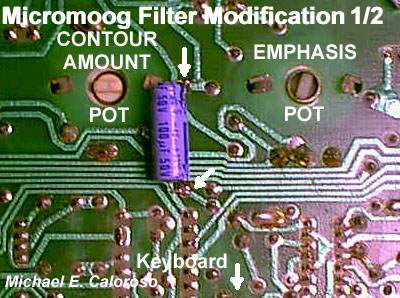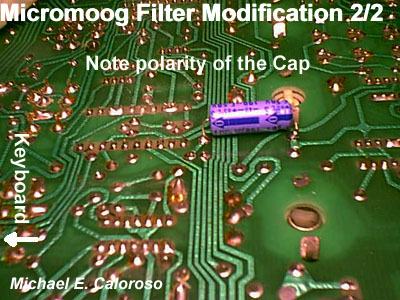Micromoog/Multimoog DIY Modifications
VCF Modification
Written by: Michael Caloroso
Micromoogs and Multimoogs have always been adequate for lead lines and noise FX, but they have a "fault" that restricts their ability to deliver bass timbres a'la the classic Minimoog bass. The VCF has a cap on the audio input that provides DC isolation, but it also forms a high pass filter; on the Micro/Multi, the cap is not large enough to allow low frequency components to pass through. This is evident when you observe the change of the pulse waveform on a scope, as you switch the VCO octave from 8' to 32'.
This "fault" is easily fixed. Just parallel C506 with a 100uf 50v electrolytic cap. Refer to the attached pics for the location of the cap on the main board; it is located smack in the middle (Micromoog and Multimoog use the same main board). Make sure you observe the polarity of the cap and that you have sufficient clearance. I tack-soldered it on the underside on the PC board and
This lowers the cutoff frequency of the composite high pass filter formed by the input cap and associated impedances, and thus results in better bass response. I compared the modified Micromoog to the Minimoog, and the Micro can easily compete (on a one oscillator level, of course).
image 1

image2

LINKS
No links at this time.
Thanks go out to the following people for their contributions to this page:
Michael Caloroso
